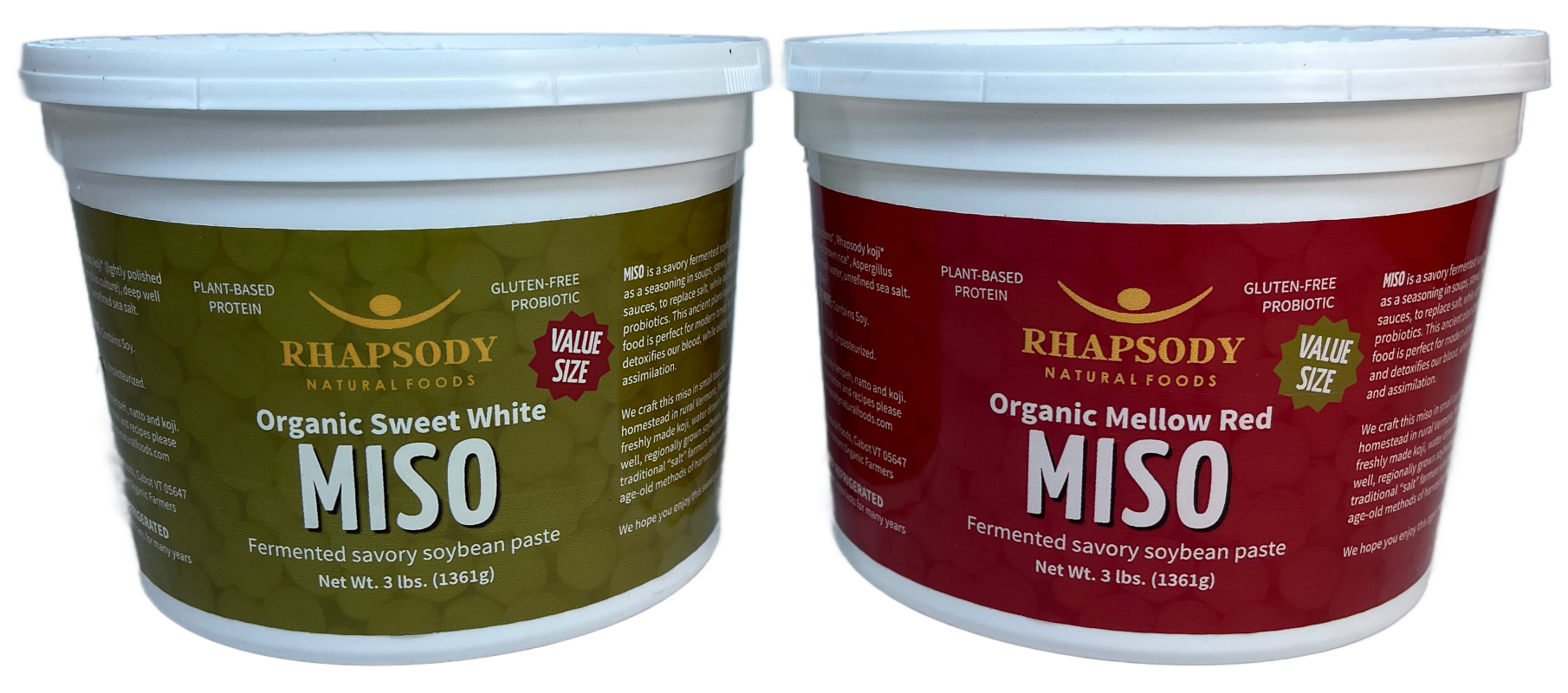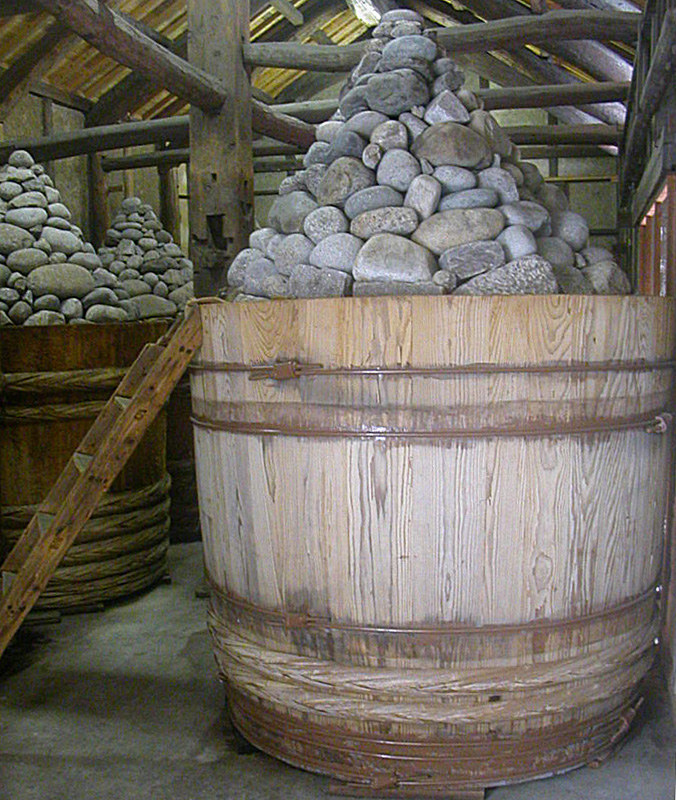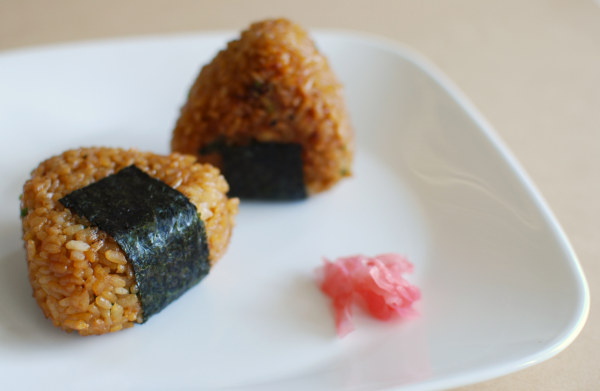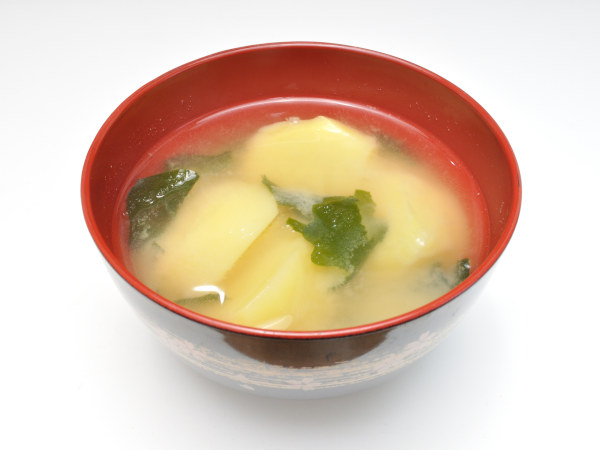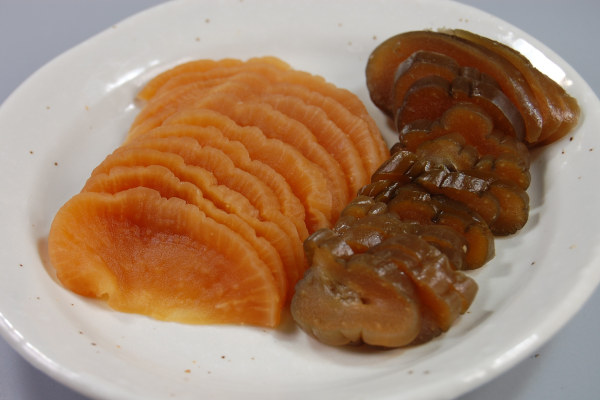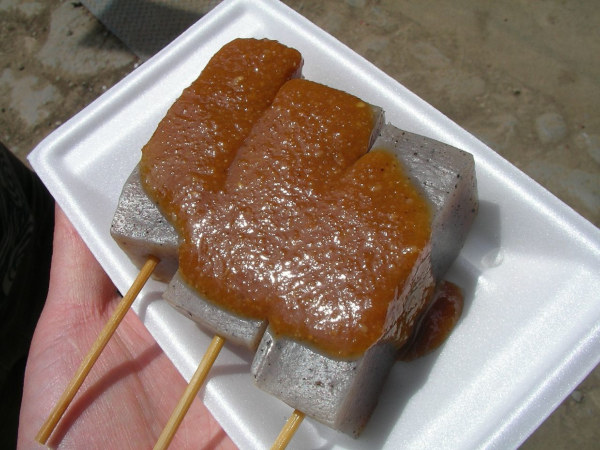
Miso
Traditionally miso was sold in cedar barrels or straw kegs for dry miso such as hatcho (soybean) miso.
Traditional miso makers in Japan use cedar barrels weighed down by stones to control the fermentation.
What is Miso
Miso is the miracle food of the 21st century, yet ancient in origin. A hearty, high protein probiotic fermented soy food, miso is used in soups, sauces, and dressings. Miso aids digestion and assimilation, reduces salt intake by adding flavor, is a key ingredient in low-fat cooking, and alkalizes and detoxifies our blood. It comes in a wide range of flavors and intensities: from sweet white miso to salty and black hacho miso.
Rhapsody certified organic miso comes in two varieties: sweet white and mellow red.
Like all fermented soy foods, miso is completely different from its original ingredient soy. The fermentation process transforms the soy beans into a new food. We age our miso in oak barrels and use water drawn from our deep well. The Eden Foods sea salt we use comes from traditional salt “farmers” using ages-old methods of harvesting and drying. Rhapsody’s 16 oz miso is available in stores throughout New England; online we offer 3 lb. bulk tubs only. We only sell our wholesale miso online because it is not cost-effective to ship smaller quantities. However, you can try a smaller quantity of miso as part of our sampler pack.
Can’t find our products in a store near you? Ask your retailer to put in a request with their suppliers (Associated Buyers, Black River Produce, United Natural Foods, or other distributors.)
Wheat-free. Gluten free. Vegan. No cholesterol. Dairy-free.
Keep refrigerated.
Sweet White Miso
This is a sweet-tasting, light colored miso with the lowest salt content of any of miso. It is especially enjoyed during summertime or whenever a lighter taste is desired. Aside from soup, great for salad dressings, sauces, and marinades.
Weight: 3 lb.
Ingredients: certified organic soybeans, certified organic rice koji (lightly polished brown rice, Aspergillus culture), unrefined sea salt
Mellow Red Miso
A miso that has a reddish color obtained by cooking the soybeans for a prolonged period of time. Slightly saltier than the Sweet White Miso, it works well in general cooking. Good for a clearer soup broth. Adds body and flavor to sauces and dressings.
Weight: 3 lb.
Ingredients: certified organic soybeans, certified organic rice koji (lightly polished brown rice, Aspergillus culture), unrefined sea salt
Flavor rice balls by adding a little miso to cooked rice prior to forming it into triangles or other shapes.
Typical miso soup containing soup stock drawn from kombu sea vegetable, dried bonita (tuna) flakes, shiitake mushroom with some tofu, and wakame sea vegetable. Any vegetable can be added to enhance flavor and boost nutrients.
Miso can be used to make pickles by simply adding vegetables to the miso jar and letting it sit in there for a few days to several weeks or months. The miso can still be used for soup and sauces.
Frequently Asked Questions About Miso
Why does miso discolor?
Rhapsody miso is a live unpasteurized food. It is not a perishable product and we are not required to put a “Sell by” date on it. As miso ages, it will darken in color and the nutritive and medicinal qualities increase.
How long does miso keep?
Miso was discovered during a time in history where refrigeration was not yet available and leftovers were not possible. Salting and fermenting foods was a way to preserve food longer so that it wouldn’t spoil. Miso is both fermented and salty. Refrigeration slows down the fermentation process and allows us to keep it under control. As recently read on an online feed: Miso will keep to infinity and beyond!
Does hot soup kill the miso probiotics?
Because the enzymes and probiotic nutrients are alive in the miso, the fermentation process continues when miso is heated but begins to deteriorate slowly when heated above 140 degrees.
That is why miso can be added to soup after you turn off the heat. But if you want to take advantage of miso’s probiotics, you want to serve it right away as the high heat will eventually kill the probiotics. Alternately, you can let the soup cool down or add cold water to it to cool it down faster, and then add the miso, or mix the miso with cold water before adding it to the soup. Probiotics organisms can handle the heat for only so long.

